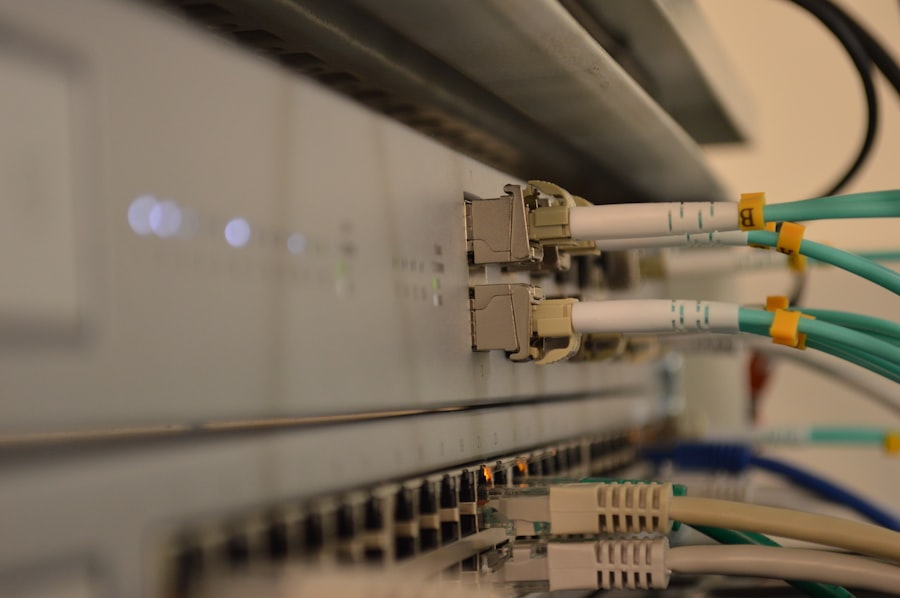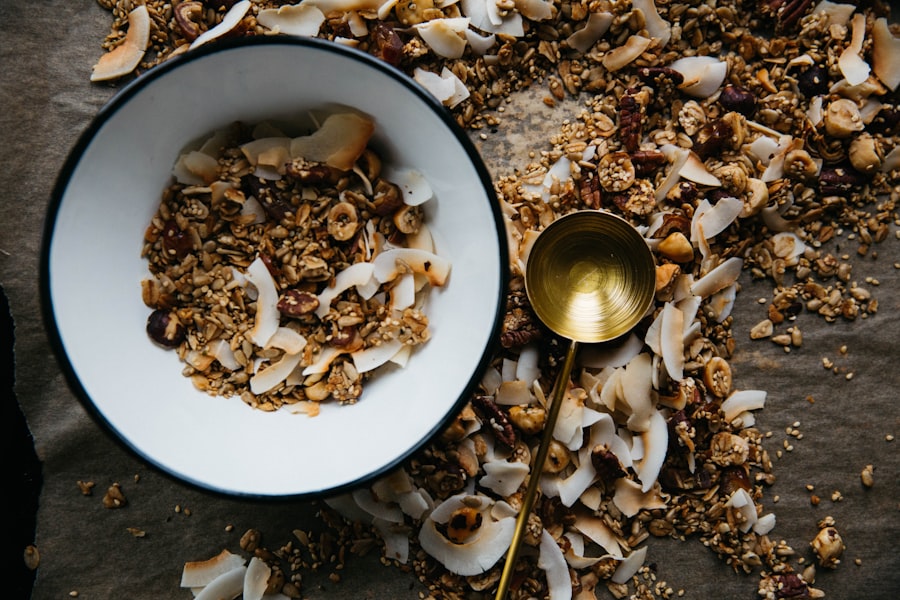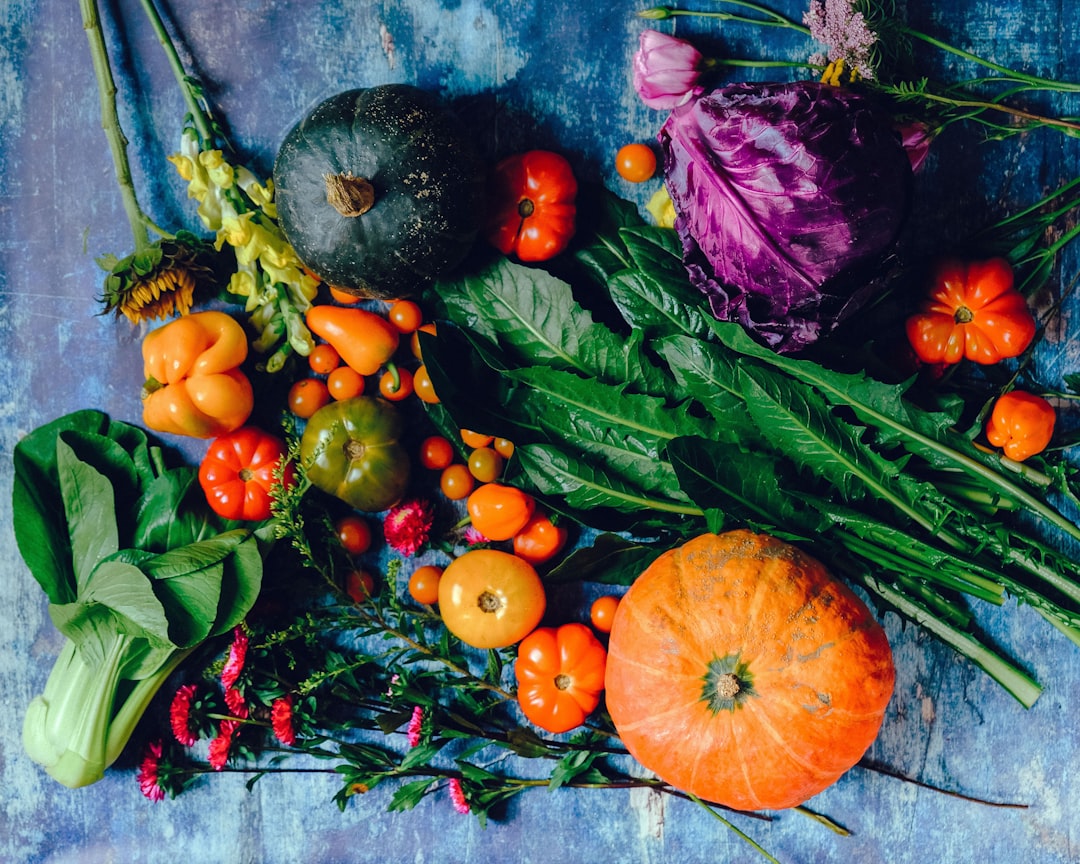Fiber is an essential component of a balanced diet, yet many people overlook its significance. As you navigate your daily meals, it’s crucial to recognize that fiber plays a vital role in maintaining overall health. This indigestible carbohydrate is found in plant-based foods and is classified into two main types: soluble and insoluble.
Soluble fiber dissolves in water and can help regulate blood sugar levels and lower cholesterol, while insoluble fiber adds bulk to your stool and aids in digestion. Understanding these distinctions can empower you to make informed dietary choices that benefit your health. Incorporating adequate fiber into your diet is not just about meeting a nutritional requirement; it’s about enhancing your quality of life.
A fiber-rich diet can lead to improved digestive health, better weight management, and a reduced risk of chronic diseases. As you become more aware of the importance of fiber, you may find yourself motivated to seek out high-fiber foods that can transform your meals and snacks into nourishing experiences. By prioritizing fiber, you are taking a proactive step toward achieving optimal health and well-being.
Key Takeaways
- Fiber is an important part of a healthy diet and can have a positive impact on overall health and wellness.
- High-fiber foods can benefit your health by promoting digestive health, aiding in weight management, and lowering cholesterol levels.
- Incorporating high-fiber foods into your daily meals and snacks can help improve blood sugar control and reduce the risk of chronic diseases.
- The best sources of fiber include fruits, vegetables, whole grains, legumes, and nuts, and it’s important to include them in your diet for optimal health.
- Increasing your fiber intake can be done without feeling overwhelmed by making small, gradual changes to your diet and balancing it with other essential nutrients.
The Benefits of High-Fiber Foods for Your Health
High-fiber foods offer a plethora of health benefits that extend beyond mere digestion. When you consume foods rich in fiber, you are not only supporting your gut health but also enhancing your overall wellness. One of the most significant advantages of high-fiber foods is their ability to promote satiety.
When you feel full longer, you are less likely to overeat or indulge in unhealthy snacks, which can lead to better weight management. This sense of fullness is largely due to the way fiber slows down the digestion process, allowing your body to absorb nutrients more effectively. Moreover, high-fiber foods are often nutrient-dense, meaning they provide essential vitamins and minerals alongside their fiber content.
This combination can help reduce the risk of various health issues, including heart disease, diabetes, and certain types of cancer. By choosing high-fiber options, you are not only nourishing your body but also fortifying it against potential health threats. As you explore the benefits of these foods, you may find that they become a staple in your diet, contributing to a healthier lifestyle.
How Fiber Can Aid in Weight Management and Digestive Health

When it comes to weight management, fiber is your ally. As you incorporate more fiber into your meals, you may notice that you feel fuller for longer periods. This is because fiber-rich foods take longer to chew and digest, which can help curb your appetite and reduce the likelihood of overeating.
Additionally, high-fiber foods often have fewer calories than their low-fiber counterparts, making them an excellent choice for those looking to maintain or lose weight without feeling deprived. In terms of digestive health, fiber plays a crucial role in promoting regular bowel movements and preventing constipation. When you consume adequate amounts of both soluble and insoluble fiber, you help ensure that your digestive system functions smoothly.
Insoluble fiber adds bulk to your stool, making it easier to pass through the intestines, while soluble fiber can help regulate the consistency of your stool. By prioritizing fiber in your diet, you are taking proactive steps toward maintaining a healthy digestive system and supporting your weight management goals.
High-Fiber Foods and Their Role in Lowering Cholesterol Levels
| High-Fiber Foods | Role in Lowering Cholesterol Levels |
|---|---|
| Oats | Contain beta-glucan, a type of soluble fiber that helps reduce LDL cholesterol levels |
| Beans | Rich in soluble fiber, which can help lower LDL cholesterol |
| Nuts | Contain unsaturated fats and fiber, which can help lower LDL cholesterol |
| Fruits | High in soluble fiber, which can help lower LDL cholesterol levels |
| Vegetables | Rich in soluble fiber and other nutrients that can help lower LDL cholesterol |
One of the lesser-known benefits of high-fiber foods is their ability to lower cholesterol levels. Soluble fiber, in particular, has been shown to bind with cholesterol in the digestive system, preventing its absorption into the bloodstream. This process can lead to lower levels of LDL (low-density lipoprotein) cholesterol, often referred to as “bad” cholesterol.
As you focus on incorporating more soluble fiber into your diet, you may find that it contributes positively to your heart health. Foods such as oats, beans, lentils, and certain fruits like apples and citrus are excellent sources of soluble fiber. By including these items in your meals and snacks, you can create a heart-healthy diet that not only tastes great but also supports your overall well-being.
As you become more aware of the connection between high-fiber foods and cholesterol management, you may feel empowered to make dietary choices that promote cardiovascular health.
The Impact of High-Fiber Foods on Blood Sugar Control
High-fiber foods also play a significant role in regulating blood sugar levels. When you consume fiber-rich foods, they slow down the absorption of sugar into your bloodstream, preventing spikes in blood sugar levels. This is particularly beneficial for individuals with diabetes or those at risk for developing the condition.
By stabilizing blood sugar levels, high-fiber foods can help improve insulin sensitivity and reduce the risk of complications associated with diabetes. Incorporating high-fiber foods into your diet can be a game-changer for blood sugar control. Whole grains, legumes, fruits, and vegetables are all excellent sources of fiber that can help maintain steady energy levels throughout the day.
As you prioritize these foods in your meals and snacks, you may notice improvements in your overall energy and mood. Understanding the impact of fiber on blood sugar control can motivate you to make healthier choices that support long-term wellness.
Incorporating High-Fiber Foods into Your Daily Meals and Snacks

Integrating high-fiber foods into your daily meals doesn’t have to be a daunting task. Start by making small changes to your existing meals; for instance, consider swapping white bread for whole grain or adding a serving of beans to your salads or soups. These simple adjustments can significantly increase your fiber intake without requiring a complete overhaul of your diet.
Snacking is another excellent opportunity to boost your fiber consumption. Instead of reaching for processed snacks that are often low in nutrients, opt for fresh fruits, raw vegetables with hummus, or whole-grain crackers with nut butter. These options not only satisfy your cravings but also provide essential nutrients that support overall health.
By being mindful of how you incorporate high-fiber foods into your meals and snacks, you can create a balanced diet that nourishes both body and mind.
The Best Sources of Fiber and How to Include Them in Your Diet
When it comes to selecting high-fiber foods, variety is key. Some of the best sources include whole grains like quinoa, brown rice, and oats; legumes such as lentils, chickpeas, and black beans; fruits like berries, pears, and apples; and vegetables including broccoli, carrots, and Brussels sprouts. Each of these foods offers unique flavors and textures that can enhance your meals while providing essential nutrients.
To include these sources in your diet effectively, consider meal prepping or planning ahead. For example, cook a large batch of quinoa or brown rice at the beginning of the week to use as a base for salads or grain bowls throughout the week. Incorporate legumes into soups or stews for added protein and fiber.
By being intentional about including these high-fiber foods in your meals, you can create a diverse and satisfying diet that supports your health goals.
Tips for Increasing Your Fiber Intake Without Feeling Overwhelmed
Increasing your fiber intake doesn’t have to feel overwhelming; it can be a gradual process that fits seamlessly into your lifestyle. Start by setting realistic goals for yourself—aim to add one additional serving of high-fiber food each day until you reach the recommended daily intake. This approach allows you to adjust without feeling pressured or deprived.
Another helpful tip is to read food labels carefully when shopping for packaged items. Look for products that contain whole grains or are labeled as high in fiber. Additionally, consider keeping a food diary to track your fiber intake; this can help you identify areas where you can improve while also celebrating your progress along the way.
By taking small steps toward increasing your fiber intake, you’ll find it easier to make lasting changes that benefit your health.
Potential Risks and Drawbacks of Consuming Too Much Fiber
While fiber is undoubtedly beneficial for health, it’s essential to be aware of potential risks associated with excessive consumption. Overloading on fiber too quickly can lead to digestive discomforts such as bloating, gas, or cramping. It’s important to increase your fiber intake gradually while ensuring adequate hydration; drinking plenty of water helps facilitate digestion and prevents constipation.
It’s always best to prioritize whole food sources of fiber rather than relying solely on supplements or fortified products. By being mindful of how much fiber you consume and listening to your body’s signals, you can enjoy the benefits without experiencing discomfort.
How to Balance Your Fiber Intake with Other Essential Nutrients
Balancing your fiber intake with other essential nutrients is crucial for maintaining overall health. While focusing on increasing fiber is important, it’s equally vital to ensure that you’re getting enough protein, healthy fats, vitamins, and minerals in your diet. A well-rounded approach will help support various bodily functions while promoting optimal health.
To achieve this balance, aim for a diverse plate at each meal—include a source of protein such as lean meats or plant-based options like tofu or legumes alongside high-fiber grains and plenty of colorful vegetables. Healthy fats from sources like avocados or nuts can also enhance nutrient absorption while providing satiety.
Making Long-Term Dietary Changes for Improved Health and Wellness
Making long-term dietary changes requires commitment and patience; however, the rewards are well worth the effort. As you focus on incorporating more high-fiber foods into your diet, consider setting specific goals that align with your health objectives—whether it’s improving digestion, managing weight, or reducing cholesterol levels. Remember that sustainable changes often come from small adjustments rather than drastic overhauls.
Celebrate each step forward as you discover new recipes or find creative ways to enjoy high-fiber foods in your meals and snacks. By fostering a positive relationship with food and prioritizing nourishing choices over time, you’ll pave the way for improved health and wellness that lasts a lifetime. Embrace this journey as an opportunity for growth and self-discovery as you cultivate habits that support both body and mind.
Fiber is an essential component of a healthy diet, particularly for seniors, as it aids in digestion and helps maintain a healthy weight. For those interested in learning more about the benefits of fiber and how it can improve overall health, a related article can be found on the Explore Senior Health website. This article provides valuable insights into the role of fiber in senior nutrition and offers practical tips for incorporating more fiber into daily meals. To read more about this topic, visit the article by clicking on this link.
FAQs
What is fiber?
Fiber is a type of carbohydrate that the body cannot digest. It is found in plant-based foods such as fruits, vegetables, whole grains, nuts, and seeds.
Why is fiber important for health?
Fiber is important for digestive health as it helps to regulate bowel movements and prevent constipation. It also helps to lower cholesterol levels, control blood sugar levels, and maintain a healthy weight.
How much fiber should I consume daily?
The recommended daily intake of fiber is 25 grams for women and 38 grams for men. However, most people do not consume enough fiber in their diets.
What are the different types of fiber?
There are two main types of fiber: soluble fiber, which dissolves in water and helps to lower cholesterol and regulate blood sugar levels, and insoluble fiber, which does not dissolve in water and helps to promote regular bowel movements.
What are some good sources of fiber?
Good sources of fiber include fruits such as apples, berries, and pears, vegetables such as broccoli, carrots, and spinach, whole grains such as oats, brown rice, and quinoa, and legumes such as beans, lentils, and chickpeas.
Can I take fiber supplements instead of getting fiber from food?
While fiber supplements can be helpful for some people, it is generally best to get fiber from whole foods as they also provide essential vitamins, minerals, and other nutrients. It is important to consult with a healthcare professional before starting any new supplement.
